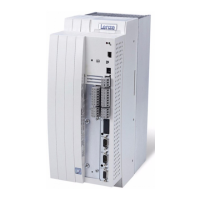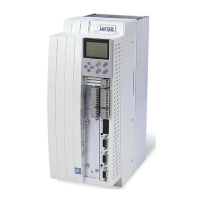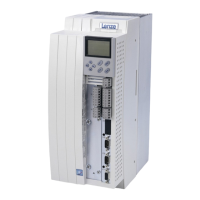Appendix
Index
14
14.2
14.2−7
EDSVF9383V EN 7.1−04/2012
Supply conditions, 5.4−6 , 5.5−10 , 10.2−1
Supply forms / electrical supply conditions, 5.2−1
Switching frequency, automatic current−dependent
change−over, 6.9−2 , 8.2−27 , 8.2−41 , 8.5−4
Switching frequency of inverter, 6.9−1
− noise optimised, 6.9−1
Switching frequency reduction, 6.9−2
switching on, check before switching on, 6.1−1
System bus (CAN), wiring, 5.7−1
System error messages, 9.5−1
− configuration, 8.4−1
− General, 9.5−1
− Resetting, 9.5−5
T
Table of attributes, 8.7−1
Technical data, 3−1
− General data, 3.1−1
− Operating conditions, 3.1−2
Temperature detection, 8.2−49
Terminal assignment
− analog inputs, 5.6−9
− analog outputs, 5.6−9
− digital inputs, 5.6−9
− Digital inputs/outputs, 11.3−2
− digital outputs, 5.6−9
− Safety relay KSR, 5.6−9 , 11.3−2
Terminal data, 5.6−2 , 11.3−1
Terms
− controller, 14.1−1
− Definitions, 14.1−1
− drive, 14.1−1
Thermal monitoring, motor
− Sensorless, 2.2−1
− with PTC thermistor, 6.6−8 , 6.6−10
T
n
current controller, 6.8−8 , 8.2−28 , 8.2−43 , 8.5−8
T
n
slip controller, 6.11−1 , 8.2−29 , 8.5−8
T
n
speed controller, 8.2−28 , 8.2−43 , 8.5−8
Torque control with speed limitation, in case of vector
control (MCTRL2), 8.2−53
Torque limitation in the field weakening range, with
vector control (MCTRL2), 8.2−50
TRIP, 8.3−1
Troubleshhoting and fault elimination, monitoring,
DC−bus voltage, 8.3−8
Troubleshooting, 9.2−1
− Drive behaviour in the event of faults, 9.3−1
− Drive errors, 9.4−1
Troubleshooting and fault elimination, 9−1
− Monitoring, 8.3−1
Current load of controller (Ixt monitoring), 8.3−4
Current load of motor (I
2
x t−monitoring), 2.2−1 , 8.3−6
DC−bus voltage, 8.3−8
Heatsink temperature, 8.3−7
Monitoring times for process data input objects, 8.3−2
− monitoring
bus off, 8.3−2
motor temperature, 8.3−5
reset node, 8.3−2
responses, 8.3−1
Type−specific accessories, 13.2−1
U
Umin boost, 6.8−6
Undervoltage threshold, DC−bus voltage, 8.3−8
V
V/f characteristic, setting of, 8.2−31
V/f characteristic control, 6.8−4
− boost correction, 6.11−5
− commissioning example, 6.3−1
Vector control, 6.8−8
− commissioning example, 6.3−5
− optimising motor magnetising current, 6.11−9
Voltage boost, optimising via boost correction, 6.11−5
Voltage supply, Via internal voltage source, 5.6−5 , 5.6−7
V
p
current controller, 6.8−8 , 8.2−28 , 8.2−43 , 8.5−8
V
P
field precontrol, 6.11−5 , 6.11−10 , 8.5−8
V
p
speed controller, 8.2−28 , 8.2−43 , 8.5−8
W
Warning, 8.3−1
Warranty, 1.2−2
Weights, 3.1−2
Wiring
− digital frequency input to X9, 5.9−1
− digital frequency output to X10, 5.9−1
− in the control cabinet, 5.3−4
− Mobile systems, 5.2−3
− outside of the control cabinet, 5.3−5
− system bus (CAN), 5.7−1
Wiring according to EMC, 5.4−1 , 5.5−1

